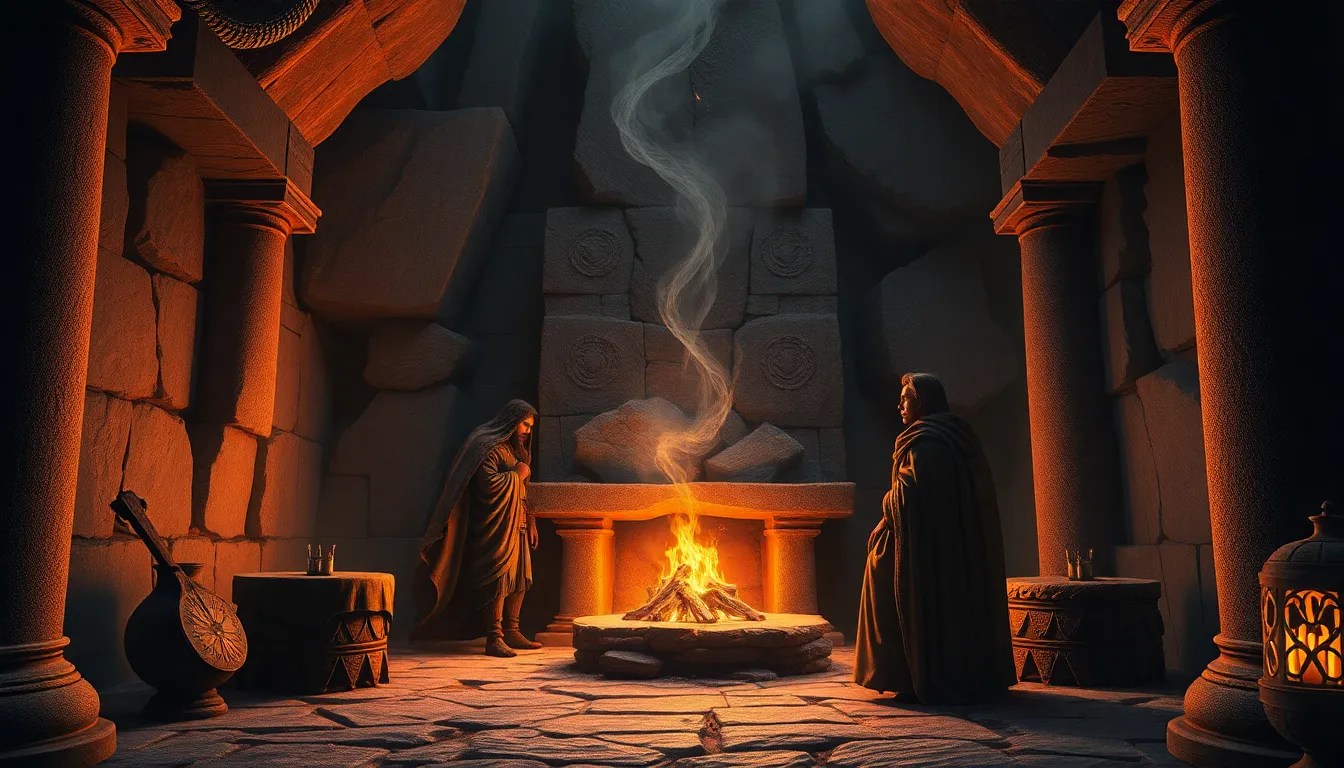The Importance of the Hearth: Lessons from Roman Mythology
I. Introduction
The hearth, a central element in Roman culture, was more than just a place for cooking; it represented warmth, safety, and community. In the context of Roman mythology, the hearth held profound significance, symbolizing the family unit and the sacred nature of home. This article explores the lessons learned from the hearth, drawing connections between ancient beliefs and contemporary life.
II. The Hearth as a Symbol of Home and Family
In Roman domestic life, the hearth served as the focal point of the home. It was where families gathered to share meals, stories, and experiences, reinforcing bonds and unity. The hearth was not merely a physical element but a powerful symbol of love and togetherness.
The connection between the hearth and family unity is illustrated in various myths and practices:
- The daily rituals surrounding the hearth emphasized the importance of family gatherings.
- Celebrations and festivals often centered around the home, highlighting the significance of familial relationships.
One of the most prominent figures associated with the hearth is Vesta, the goddess of the hearth. Her mythology, alongside the Vestal Virgins, underscores the sacredness of home and the responsibilities tied to it.
III. Vesta: The Goddess of the Hearth
Vesta, a central figure in Roman mythology, was revered as the goddess of the hearth, home, and family. She embodied the warmth and safety associated with domestic life. Vesta was depicted as a modestly dressed woman, often holding a flame or a torch, symbolizing the eternal flame of the hearth.
The Temple of Vesta, located in the Forum Romanum, was a vital cultural and religious site. This temple housed the sacred flame, tended by the Vestal Virgins, whose primary duty was to maintain the fire that symbolized the eternal life of Rome. The temple served not only as a religious center but also as a reminder of the importance of the hearth in public life.
Vesta’s role extended into Roman religious practices, where offerings were made to her to ensure the safety and prosperity of the household. Her presence in public life reflected the idea that the hearth was essential not just for families but for the stability of society as a whole.
IV. Myths Surrounding the Hearth and Domestic Life
Several myths highlight the significance of the hearth in Roman culture, emphasizing its role in the fabric of domestic life.
One of the most notable stories is that of Aeneas, the Trojan hero who played a crucial role in the founding of Rome. As he journeyed to establish a new home for his people, the hearth symbolized his family’s legacy and the continuity of culture. The hearth represented not just physical safety but also the emotional ties to his homeland.
Another important myth is that of Proserpina, the goddess of the underworld. Her story reflects the cyclical nature of life and death, emphasizing the importance of the hearth during times of separation and reunion. The hearth served as a reminder of domestic bonds, even in the face of adversity.
Moreover, hospitality was a core value in Roman society, often linked to the hearth. The act of welcoming guests into one’s home was sacred, reinforcing community ties and demonstrating the importance of the hearth in fostering relationships.
V. The Hearth as a Source of Safety and Security
The hearth was viewed as a protector against chaos and disorder. In times of war and strife, the hearth became a sanctuary where families could find solace and security. The myths surrounding the hearth often highlight its protective qualities.
For example, the story of the Sabine women emphasizes the importance of the home during conflict. The abduction of the Sabine women led to a need for unity and safety within the domestic sphere, showcasing how the hearth became a symbol of refuge amidst turmoil.
Lessons from these myths illustrate the necessity of a safe haven, where individuals can find peace and stability. The hearth serves as a reminder of the importance of safeguarding one’s home and loved ones against external threats.
VI. The Hearth and the Concept of Sacrifice
In Roman mythology, the hearth was not just a symbol of comfort but also a place of sacrifice. Offerings were frequently made at the hearth, highlighting the significance of gratitude and devotion to the household.
Numerous myths illustrate the theme of sacrifice for the home. One such story involves the dedication of the Vestal Virgins, who sacrificed their personal lives for the well-being of the community. Their commitment to maintaining the sacred fire of Vesta exemplifies the balance between personal sacrifice and communal well-being.
Through these narratives, the hearth becomes a central point for exploring the interplay between individual desires and the greater good, teaching valuable lessons about the importance of sacrifice in nurturing familial and communal ties.
VII. Modern Interpretations and Relevance of the Hearth
The symbolism of the hearth persists in contemporary culture, often representing warmth, safety, and connection. Modern families still gather around the kitchen table, echoing the traditions of ancient Rome.
Lessons from Roman mythology regarding family dynamics remain relevant today:
- The importance of maintaining strong family bonds.
- Creating a nurturing environment for personal growth.
- Emphasizing the value of hospitality and community.
In our fast-paced world, the idea of the hearth as a nurturing space encourages individuals to prioritize meaningful relationships and a sense of belonging.
VIII. Conclusion
In conclusion, the hearth holds immense importance in Roman mythology, serving as a symbol of home, family, safety, and sacrifice. The lessons derived from the hearth remind us of the value of nurturing our domestic spaces and the relationships within them.
As we reflect on these ancient teachings, we are encouraged to consider the role of the hearth in our personal and communal lives, fostering a sense of unity and warmth that transcends generations.



